The way to Watch and {Photograph} the Complete Lunar Eclipse on November 8

Aloha and welcome. You have to be right here as a result of like most individuals, you waited till the final minute to do one thing. Or perhaps you’re simply genuinely curious and had no concept there’s a whole lunar eclipse developing. No matter it’s, welcome, and thanks for being right here.
This information goes to be a crash course on planning and viewing/taking pictures the full lunar eclipse within the early morning hours of November eighth. The moon will begin to enter Earth’s shadow at 3:02 a.m. Japanese Daylight Time (12:02 a.m. PST). It will likely be the final whole lunar eclipse till March 14, 2025. Let’s soar proper into it!
What’s a “Complete” Lunar Eclipse
First, let’s outline what a lunar eclipse is. When the Earth is positioned between the Solar and the Moon, the “shadow” of the Earth initiatives upon the Moon. The outer shadow is called the penumbra and the interior shadow is called the umbra. This alignment can fluctuate ever so barely because the Earth is way bigger than the Moon, so three sorts of lunar eclipses can happen:
- Penumbral: That is the place the Earth’s penumbra basically “dims” the Moon.
- Partial: That is the place the umbra begins to really eclipse the Moon.
- Complete: That is the place the umbra utterly engulfs the Moon, inflicting the “Blood Moon” that is the one you need and the one we’re going to get on Nov 7-8. Complete eclipses incorporate the penumbral and partial phases as nicely.
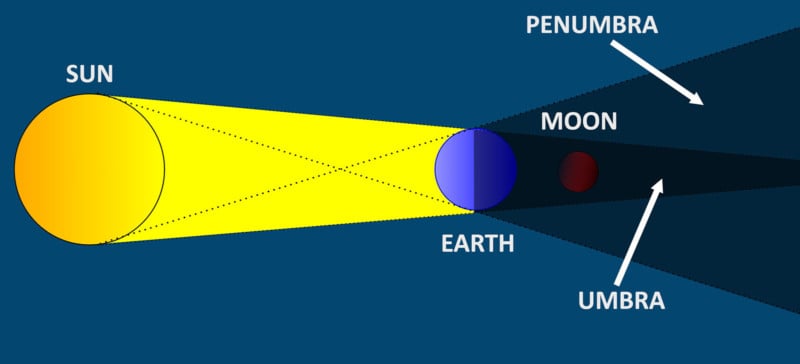
Now that that, let’s get to the planning.
Eclipse Visibility in Your Area
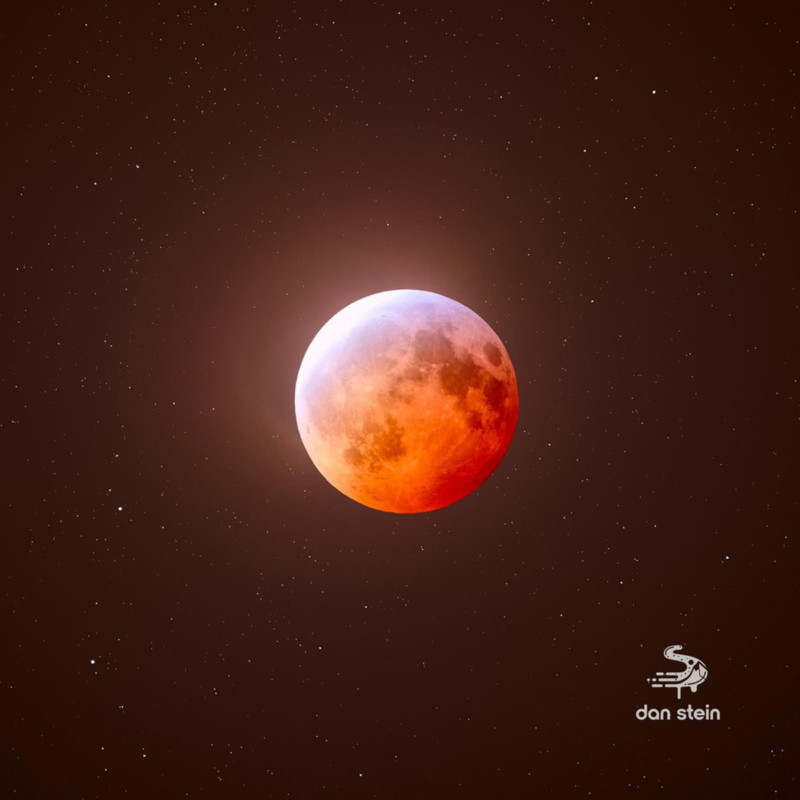
Since chances are you’ll be studying this in Tokyo or perhaps at a bagel store in New Jersey, you will need to understand that the situation of the Moon might be totally different relying on the place you’re situated. The easiest way to determine the place the eclipse might be is the useful dandy nifty map on timeanddate.com.
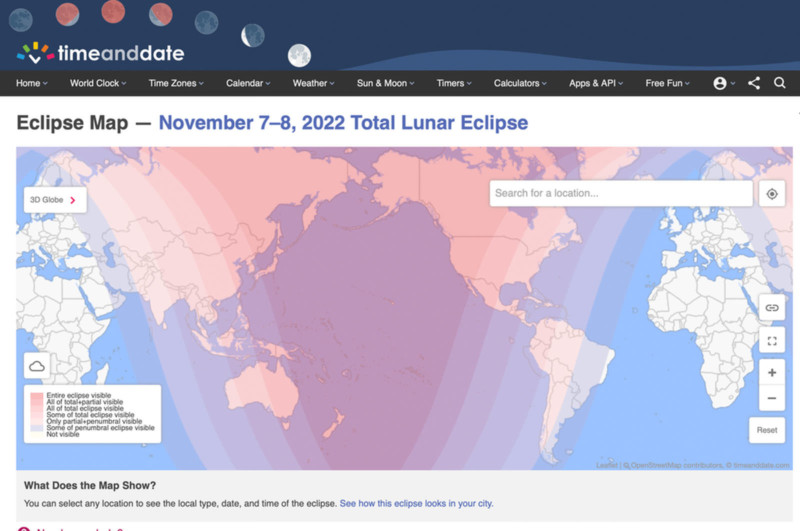
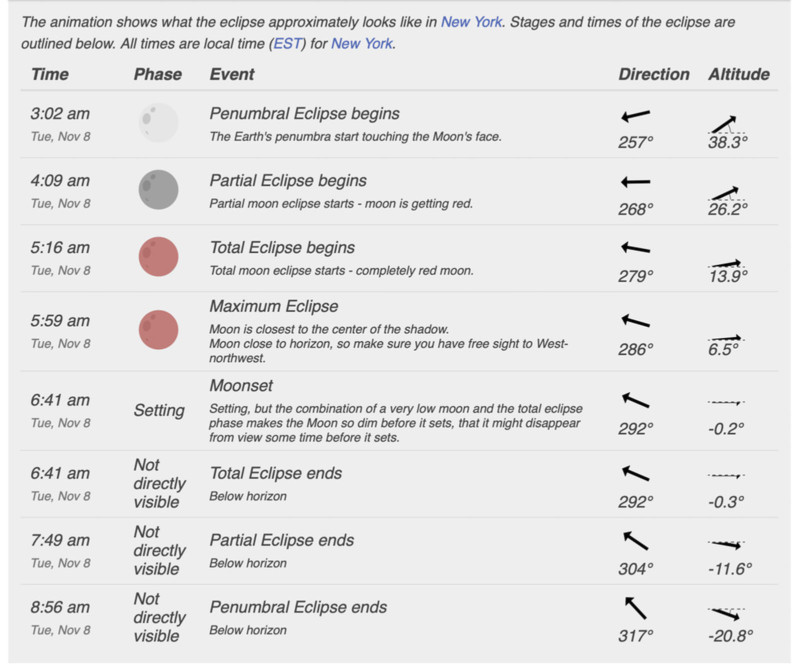
Let me clarify what you’re looking at right here. All of the instances on the left are native to the situation you typed in. Every timestamp represents a section of the eclipse. As mentioned above, there are a couple of. On the suitable, there are some essential astronomical attributes to concentrate to.
The route would be the location within the sky the Moon might be chilling in — the levels characterize north, south, east, and west. In astronomy, this is called the azimuth. In the event you pull up the compass app in your telephone you’ll be able to match the diploma markings on time and date to the cardinal level they correspond to. The altitude might be how excessive the Moon is above, and likewise under, the horizon.
So in my instance, the Blood Moon will happen at 5:16 native time due 279º west. Because the eclipse continues, the Moon will really begin setting low on the horizon.
Climate
Right here we go: probably the most irritating factor ever on the earth of astronomy. Since this text is being printed so last-minute, you’ll be able to guess that the climate sources might be fairly correct for eclipse day. My suggestions for climate sources are your area’s federally funded entities. For me, that may be the National Weather Service. It nonetheless wouldn’t harm to cross-check your climate with a further supply comparable to Astrospheric. Kind in your location and see what you’ve gotten.
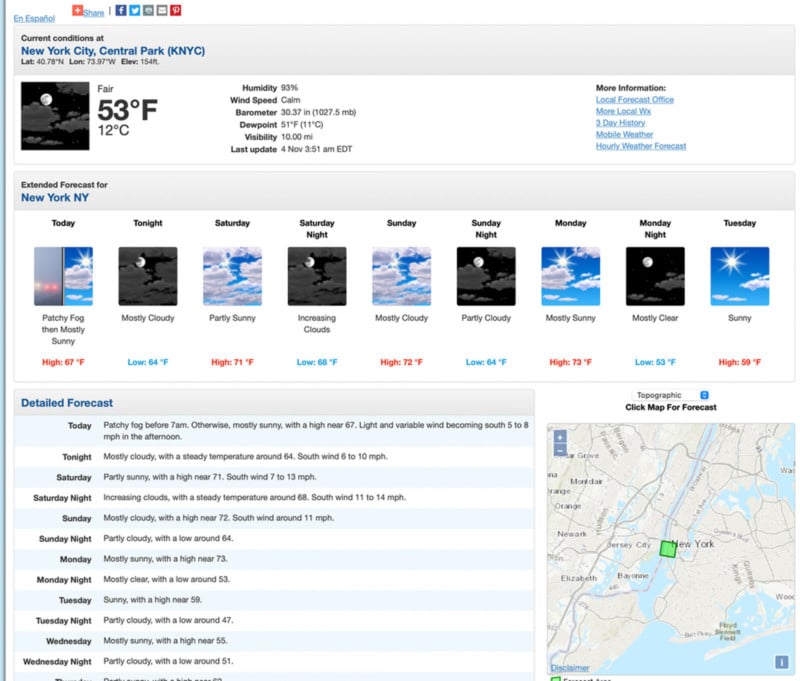
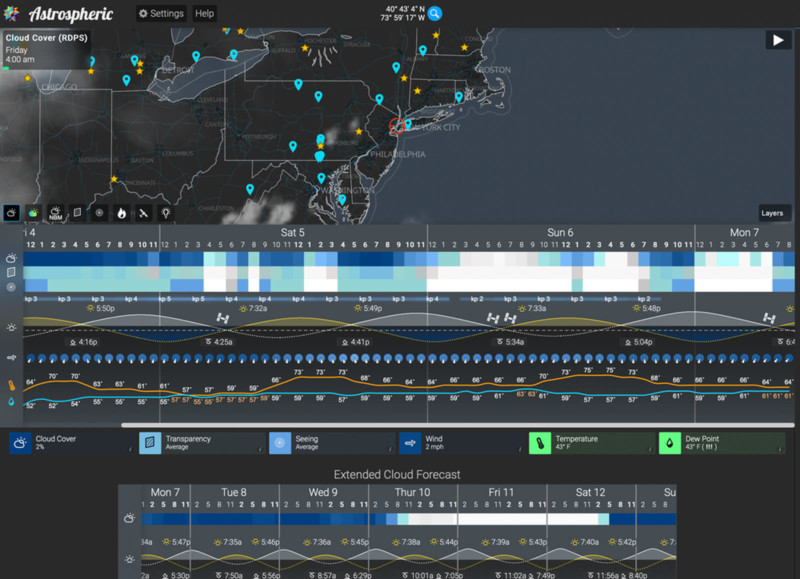
Control the climate and have a backup plan if it modifications!
If all you wish to do is view the eclipse, you’re all set. This subsequent portion might be devoted to these with these shiny digital camera thingies.
Capturing the Complete Lunar Eclipse
Photographers, you want a couple of issues you’re almost definitely already accustomed to to make some magic.
- Your digital camera and no matter lens you’ve gotten (it may be broad or it may be telephoto — it simply relies on what sort of shot you need)
- A very good sturdy tripod
- A distant set off or your digital camera’s built-in self-timer perform
- Non-obligatory: a star tracker
And that’s primarily it, now let’s discuss how one can plan this shot utilizing the instruments mentioned above in addition to an app like Planit Pro or PhotoPills.
Compositions
After determining the place the eclipse is in your sky, chances are you’ll wish to take into consideration the way you wish to shoot it earlier than you even drive out to the situation. In my state of affairs, the eclipse is low on the horizon, so my purpose is to pair the Moon juxtaposed with a panorama function. This implies taking pictures a little bit bit wider and making an attempt to seize a foreground multi function shot. I can use Planit to determine this out, now watch this drive:
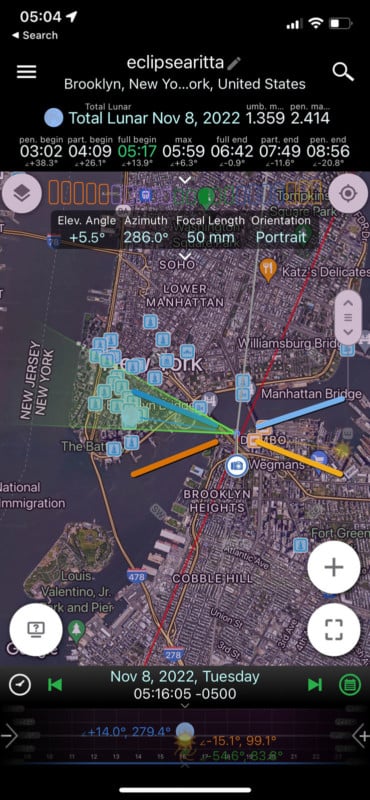
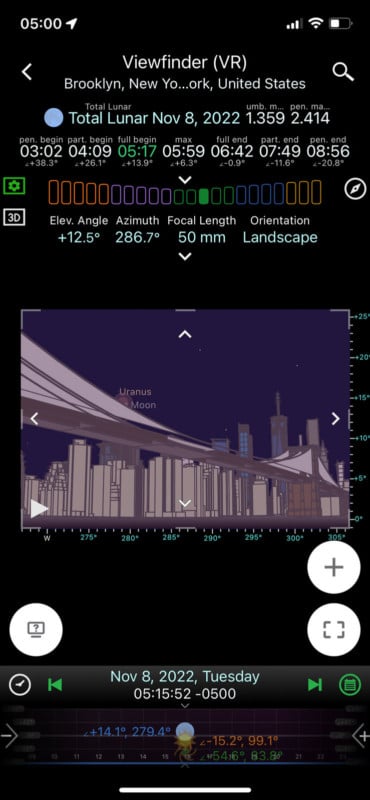
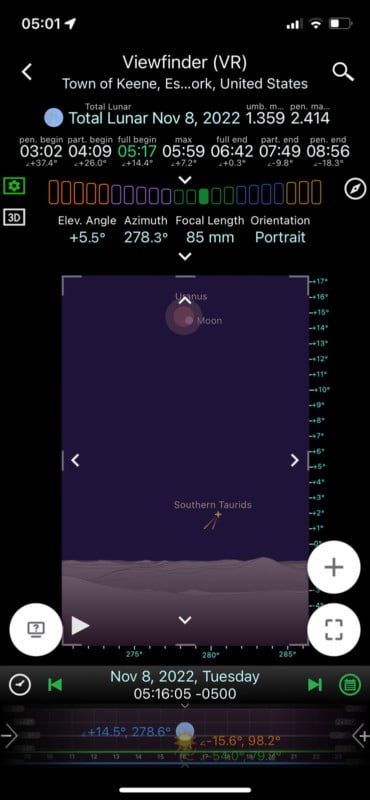
Subsequent onto the total disc picture. That is the place utilizing a free software like Stellarium is nifty. You possibly can punch in your digital camera lens, sensor measurement, and so on, and know precisely how massive the Moon will seem within the sky, coupled with all the opposite particulars above like altitude and azimuth.
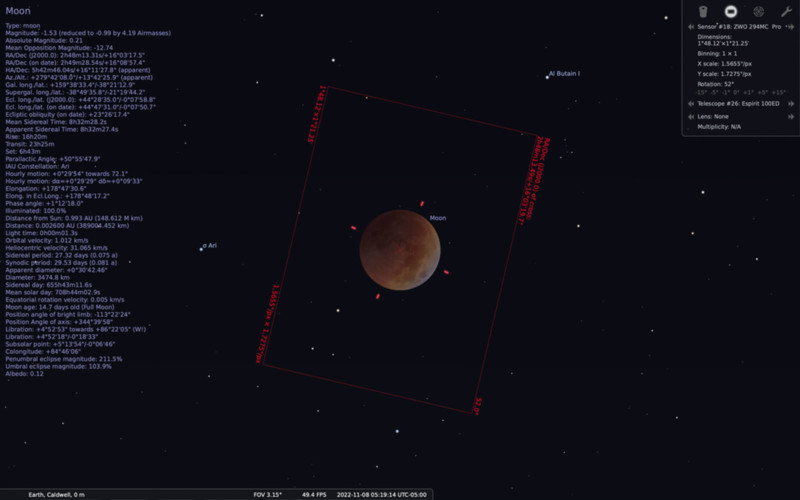
Okay, nice, your shot is deliberate. Now how do you shoot it?
Capturing
Okay nonetheless gotta go quick so let’s run by way of a guidelines of tips on how to shoot this factor.
- Place your digital camera in your tripod.
- Level your digital camera on the Moon. I feel this one ought to be fairly simple to seek out.
- Begin with a fairly quick shutter pace, say 1/250 of a second. Relying on many elements, this can be too shiny or too darkish, however it’s a good place to begin because the Moon strikes in a short time and we wish to freeze the movement.
- Begin by adjusting your aperture to its widest.
- Compensate with the ISO to attain a median publicity on the histogram.
- Shoot and see what you get. The Moon’s edges additionally present some chromatic aberration, so for those who discover a big quantity then cease all the way down to a narrower aperture. Then, use the ISO to compensate.
- Shoot as many pictures as attainable. Stacking is good right here for extra element.
- Fluctuate your shutter pace sufficient so you’ll be able to guarantee you’ve gotten captured sufficient particulars for post-processing in addition to compensation for below/overexposure.
- Panorama photographers could must additionally shoot a further shot with a lengthy shutter pace and low ISO to seize element within the foreground which will be masked in submit.
Now let’s do it with a tracker:
This can be a extra superior method, so when you’ve got no concept what that is, simply ignore it. Star trackers even have a Lunar mode, relying on the make. It would be best to use this. Observe the identical steps as above, however this time align your tracker and:
- You can probably drop your ISO down fairly low.
- Your shutter speeds could fluctuate between 10 seconds to 1 minute relying in your focal size, and polar alignment accuracy.
- Due to the tracker benefit, use probably the most superb aperture to your lens. Many have a candy spot round f/8 or f/11 to attain most sharpness.
- Shoot as many frames as attainable so you’ll be able to stack.
- For panorama photographers, flip the tracker off and shoot one other shot to your foreground as it is going to be blurry from the tracker publicity.
Holy smokes, is that it? Yeah, that’s it. An important factor right here is to get pleasure from your self. Lunar eclipses are a magical expertise and in case you are struggling along with your digital camera or getting annoyed, put it down. Watch and observe what the universe can do.
P.S. In the event you loved this text, be sure you try my complete guide to astrophotography.
In regards to the creator: Daniel J. Stein is a passionate nightscape photographer working full-time in New Jersey in his household’s industrial plumbing contracting enterprise. The opinions expressed on this article are solely these of the creator. You’ll find extra of Stein’s work on his website and Instagram. This text was additionally printed here.